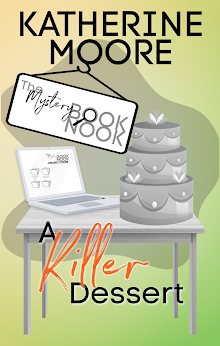And oddly, because there was no trauma associated with seeing Disney's The Little Mermaid, I feel the same way about Sebastian's sprightly "Under the Sea." I read the original "Little Mermaid" when I was a kid and have always preferred the tragic version. When reading fairy tales I always knew when some bowdlerizing hand had been at work--forced happy endings, unexpected upturns in the hero or heroine's fortunes, a birth instead of a death. (I also noticed that blondes had more fun in fairy tales and that Snow White was the only princess with dark hair like mine. Years later, when I first encountered the literary criticism of Leslie Fiedler, I discovered that wasn't an accident. Blondes are of the light, the human equivalent of "the shining ones." And then there are the others, those less favored. And those were the ones I was interested in.
(Fiedler is famous for his book Love and Death in the American Novel and infamous for his commentary on homoeroticism in Huckleberry Finn--the essay is called something like "Come Back to the Raft Ag'in Huck Honey." He was a lit crit with all the right creds, but he was also a champion of genre fiction. Thank you Dr. Buford Jones for introducing me to him! But I digress.)
It seemed to me, reading fairy tales that the ugly ones got a raw deal. Cinderella's stepsisters weren't just mean, they were ugly and not in the sense my grandmother meant when she would say, "Now don't be ugly."
Yes, they got to wear the pretty dresses and eat the good food but maybe they were mean because they were ugly and then, as now, "pretty" is often the only currency a woman has to spend. And then one day the idea for this story swam into my mind and I knew I had to write it.
THE UGLY ONE
By Katherine Tomlinson
Liia was very young when she first realized she was
different.
Her mother had suckled her but not nurtured her in any way
and she found out that if it had not been for the intervention of her father,
she would have been abandoned when her family and the school they swam with,
moved on to warmer waters.
Liia’s difference was not her fault. Her mother had been
exposed to toxic waste in the water and when she gave birth to 23 fry, all of
them but Liia were dead. Liia’s mother tried to eat the dead fry but they were
too toxic.
Her father had named her Liia, which means “miracle” and had
protected her from predators until she was old enough to fend for herself.
Some months later, there was another batch of fry and from
that came Liia’s seven sisters.
Seven lovely sisters with silver hair like their mother and
beautiful, silver-blue tails.
Lia’s hair was moss-green and patchy. It had no luster, even
in the sun, and her tail was the color of the boats they found on the bottom of
the north sea before the rust took them. A dull, gun-metal gray that was often
cloudy with “ick.”
She had lumpy tumors on her tail as well, tumors that
disfigured.
She was a strong swimmer.
Then her father died, in a battle with the monster dog fish and after that her mother and sisters ignored her.
She began reaching out to the lesser fishes, the ones that
her kind dominated and fed on and used as slaves.
She gathered an army of electric eels and sea-going snakes
and sharks. The sharks especially were on board with her plans and agenda.
Unlike many of her kind, she had taken pains to learn the
language of the lesser fishes and so she could communicate with them and let
them know that she would share the spoils with them.
Most of her school were pleasure-loving swim-abouts who
weren’t really ready to defend themselves against a coordinated attack.
For there had never been such a coordinated attack in the
history of the sea.
Liia’s school lived in the abandoned and coral-calcified
remains of what had once been a Spanish galleon plying the lucrative route
between spain and the new world, filled with looted Incan/Aztec gold. As a
child, Liia had enjoyed playing with the golden fruits that had been plucked from
a palace treasure garden and carried away, only to bloom on in the salty earth
of the sea bed. She had loved the jewelry too, the pretty necklaces but her
mother had taken them from her and told her she was so ugly she took the shine
away.
And that was when Liia began to hate.
She planned her campaign on the treasure ship with military
precision. She had the fishes scavenge whalebone and shark cartilage and she
constructed massive cages.
She would lead the charge on a marlin, its spiny fin fully
elongated.
First she would take a treasure bath.
Then she would supervise the executions. Her sisters and
mother would be last, but they would be made to watch as the sharks and the ate
the others.
Liia had no illusion about the loyalty of her allies. They were
what they were and at some point they would likely fall upon her.
She would taste bitter she knew.
Bitter and ugly.
But her final thoughts would be of sweet revenge. And that
would be enough.





